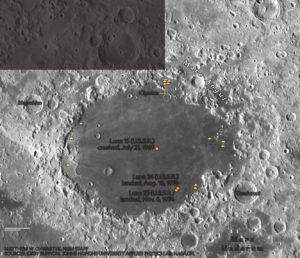by R.G. Andrews, December 13, 2019 in NationalGeography
Scientists scouring the lunar surface for clues to past impact rates found a bonus feature that has geologists “thoroughly confused.”
Sometime after the solar system formed 4.6 billion years ago, a projectile slammed into Earth’s youthful moon and formed the 620-mile-wide basin known as the Crisium basin. No one knows exactly when this impact happened, but for decades scientists have been trying to solve the puzzle as part of a larger debate over whether the moon and, by proxy, Earth endured a period of frenzied meteor bombardment in their early histories.
Now, scientists scouring the region say they’ve spotted a crater within the basin that appears to contain pristine impact melt, a type of volcanic rock that can act like a definitive geologic clock. If future astronauts or a robot could obtain a sample and tease out its age, that may help reveal what was happening on Earth during the primordial period when life first emerged on our planet.
And, as an added bonus, the discovery comes with an intriguing mystery: The basin also holds a geologic blister the size of Washington, D.C., that’s unlike anything else seen in the solar system. As the team reports in an upcoming paper in the Journal of Geophysical Research: Planets, this volcanic lump appears to have been inflated and cracked by peculiar underground magmatic activity that the researchers can’t currently explain.
“I’m thoroughly confused by it,” says Clive Neal, an expert in lunar geology at the University of Notre Dame who was not involved with the new research.

…
